7 Roof Maintenance Tips to Maximize Your Roof’s Life
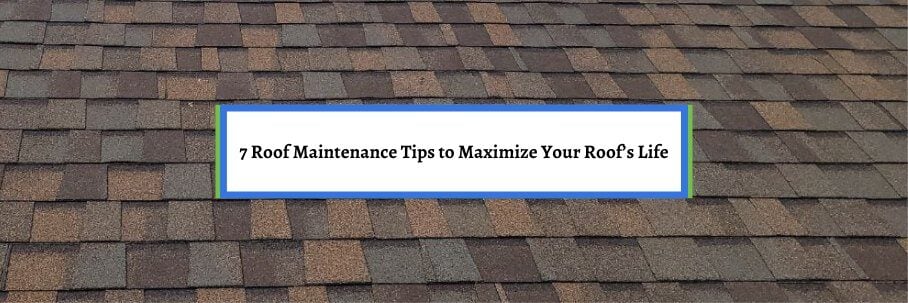
Do you want to maximize your roof’s life? Are you wondering what you can do to ensure it happens?
There are plenty of things that affect a roof’s lifespan. However, roof maintenance is the best way to maximize it years after installation.
I could ignore this fact as a roofing contractor. After all, roofs that fail earlier than expected just mean more money for the roofing industry.
But I don’t believe in doing things this way.
For over 30 years, Bill Ragan Roofing has taken pride in helping homeowners get the most out of their roof investment. Now, I’ll give you the roof maintenance tips you need to maximize your roof’s life.
Let’s get to the 7 roof maintenance tips every homeowner should do regularly to get as much life as possible out of their roof.
1. Check the bottom of your decking in the attic for active leaks
Roof decking is the wooden foundation of your roof system that the roofing material and components are installed on. When there’s a roof leak, water will cause discoloration on the wood and eventually lead to rotting.
Unfortunately, most homeowners don’t recognize leaks until they cause ceiling or other drywall damage. That’s why the first maintenance tip is to check the bottom of your decking from the attic to see if there are any active leaks.
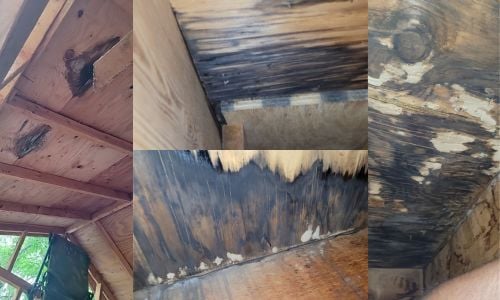
If there’s discoloration, water is getting underneath your roofing materials and soaking through the wood. Once it reaches this point, water stains on your ceiling won’t be far behind.
Checking your decking for signs of leaks catches them before they get bad enough to cause serious damage, which also helps keep your roof running smoothly. But if the discoloration is widespread or you have many leaks, it might be time to replace your roof.
2. Keep your gutters clean
While it may not be on the roof, keeping gutters clear is a crucial maintenance tip for your roof and home. This prevents debris buildup that can send water behind your gutters, leading to rotting the soffit, the edges of your roof decking, the wood around your windows, and leaks into your interior walls.
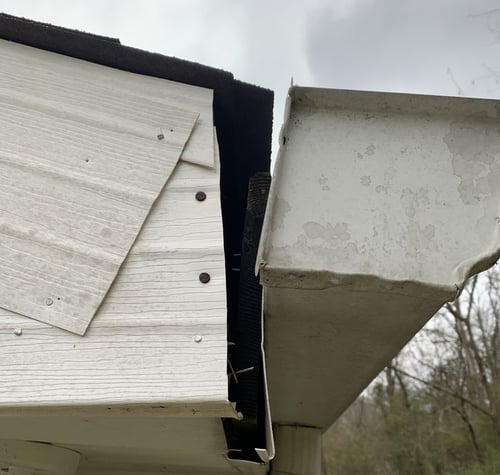
Built-up debris can also be very heavy, so keeping gutters clean prevents them from pulling away from the wall to avoid even worse damage. The debris itself also causes problems because it doesn’t really dry.
This is perfect for mold/mildew to thrive, which can lead to health problems if the mold spreads with the water overflowing the gutters. If all of this isn't bad enough, water from overflowing the gutters also washes out your foundation.
3. Clear sitting debris off your roof
One of the most important roof maintenance tips is to remove sitting debris, especially in roof valleys. Leaves, sticks, and other debris create a dam on your roof that doesn’t allow water to drain down your roof properly.

This backs up the water until it gets under the shingles and leaks inside your home through the path of least resistance. Removing debris blockage is one thing, but you also need to get rid of any debris piles sitting anywhere on the roof.
Letting saturated debris sit on your roof damages and shortens the lifespan of the shingles below. It also encourages moss growth that eats away at certain minerals embedded in shingles.
4. Trim back overhanging tree limbs
The next roof maintenance tip is to trim back or remove tree limbs that overhang your roof. Overhanging tree limbs erodes your roof’s protective top layer by allowing water or sap to drip continuously.
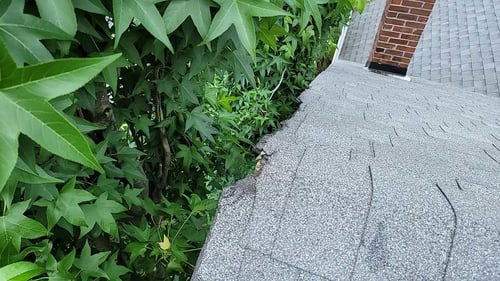
It also helps prevent leaves, sticks, and other debris from building up on the roof, which we just talked about in the last section. Another thing you have to worry about is bird droppings.
Bird droppings are highly acidic and eat away at asphalt shingles, which shortens an asphalt roof’s lifespan. The last thing you have to worry about is a tree limb(s) falling on your roof.
Fallen limbs are guaranteed to damage your asphalt shingles and can cause other structural damage if large enough. Unfortunately, the only way to prevent all of this is for regular limb trimmings or removing the tree completely.
5. Inspect the condition of the shingles
The most obvious maintenance tip is to check the condition of the shingles for potential problems. You should look for signs of granule loss, curling, cracking, and missing shingles.
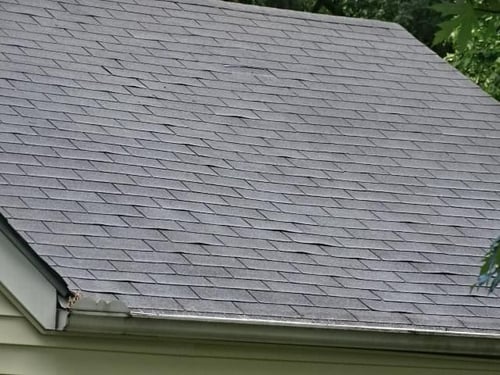
Shingles that are curling, cracking, and/or experiencing granular loss are near or at the end of their lifespan. Not only does inspecting the shingles prevent leaks before they start, but it also catches future problems and will even give you an idea if it’s time to replace your roof.

On the other hand, missing or lifted shingles don’t necessarily mean you need a new roof. Instead, they were most likely damaged by wind or improperly installed.
You can file an insurance claim if wind damage caused the missing shingles. However, the only recourse for missing shingles caused by improper installation is to reach out to the roofing contractor who installed them.
6. Check penetrations for potential problems
A roof penetration is anything that comes through a roof, such as roof vents, plumbing pipes, chimneys, skylights, etc. Something has to go around them to stop water from following the penetrations inside.
So, it’s crucial to regularly check around penetrations for potential problems during roof maintenance to prevent leaks. For example, pipe boots are a neoprene (synthetic rubber) flashing installed around plumbing or vent pipes.

They will not outlast the life of a roof, and cracks form from constant UV exposure. This is one of (if not the most) common roof leaks that is easily fixable if caught with roof maintenance.
However, you’ll be looking at costly repairs that extend beyond the roof if you don’t maintain the flashing or boots around penetrations.
7. Make sure the flashing is in good condition
Roof flashing is metal installed in areas where shingles butt up against something (walls, chimneys, valleys, skylights, etc.) to direct water away from areas prone to leaks. It’s one of the most crucial roofing components, and every roof must have it in the right areas.
 (Compromised flashing around a chimney)
(Compromised flashing around a chimney)
One of the biggest roof maintenance tips is ensuring the flashing isn’t rusted or damaged or has installation problems. You can’t imagine how much water leaks into a home’s interior from failed or damaged flashing.
So, ensuring there are no issues with regular maintenance inspections can potentially save you thousands of dollars in damage and repairs.
Should you hire a professional for roof maintenance?
You should absolutely hire a professional for roof maintenance. Of course, you can still do it yourself.
However, there are a few things you should consider. The main thing is that you majorly risk your safety if you don’t have experience being on a ladder or walking on a roof.
You also probably don’t know what to look for or how to identify potential problems. And if there are issues, you need the right knowledge, tools, and materials to fix them correctly.
On top of all this, you risk voiding warranties by doing any work yourself. So, I always recommend using the same roofing contractor for roof maintenance if possible.
How often should your roof get maintenance?
After reading this article, you have the roof maintenance tips needed to maximize your roof’s lifespan. I also gave you my recommendation on whether you should hire a professional roofing contractor or try to do it yourself.
At the end of the day, it’s your decision. But there’s no reason to risk your safety and potentially do more harm than good unless you have the right experience.
No matter how you go about it, the important thing is that your roof is maintained throughout its life. But how often does a roof actually need maintenance?
Check out How Often Does Your Roof Need Maintenance to learn how often it’s needed, the importance of maintaining a roof, and everything it includes.


